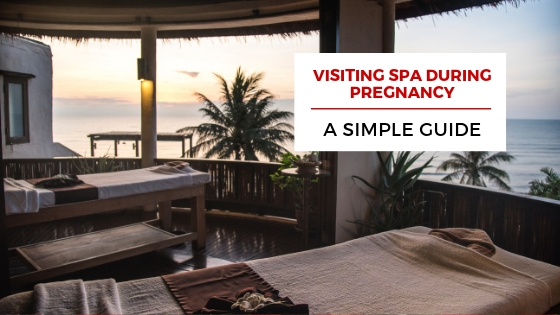The spa is increasingly becoming a popular, mainstream and socially acceptable way of relaxation and with a focus on self-care during pregnancy.
Although there are many practitioners in the Spa industry with experience in providing treatments for women during pregnancy and post-partum, a national or international written guidance is lacking. The practices may vary from one Spa centre to the other.
As a result, many pregnant women often find the information given to them conflicting. Many of them become so worried that they stay away from Spa treatments during pregnancy and breastfeeding period.
This article discusses the benefits and precautions of Spa treatments during pregnancy.
We are grateful to Susan Morrissey, Spa Manager at Cloud Twelve (London) for the support and guidance in writing this article.
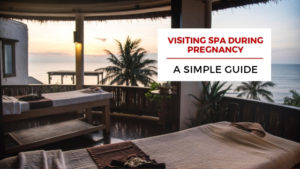
What is a Spa?
According to the International Spa Association (ISPA), “Spas are places devoted to overall well-being through a variety of professional services that encourage the renewal of mind, body, and spirit.”
During the 19th and early 20th century, wellness resorts close to Mineral and thermal springs were referred to as Spas. The brief history of Spa therapy can be found here.
However, now the spa broadly means centres which provide massage and other body treatments.
Spas can be broadly classified as Day Spa (treatments are for few hours or a day and do not provide overnight accommodation) and Destination Spa/ Retreats (with facilities to stay with various packages on health and wellbeing programmes).
The changing concept: from “luxury pampering” to “holistic wellness centres”
Traditionally the Spas have been considered as places simply designed for “luxury pampering”.
But gradually the Spas are being viewed as centres for a holistic approach to health and lifestyle with the aim of stress management and disease prevention. (Ref)
Spa in medicine
Spa treatments, such as aromatherapy massages, have been used for the management of pain and psychological distress in the end-stage cancer patients as a part of palliative care. (Ref)
We have now a much better understanding of the positive physiological changes that Spa treatment brings to our brain and the endocrine system, to relieve stress and pain symptoms.
Spa and pregnancy
Can you go to the spa while pregnant?
Pregnancy and the entire journey of transition to parenthood may not always be smooth sailing for many. Pregnant women often suffer from stress, anxiety, insomnia, and aches and pains.
There is strong scientific evidence to suggest the adverse effects of stress during pregnancy on the unborn baby and pregnancy outcomes.
Therefore, managing stress is vital throughout the transition to parenthood.
Moreover, adopting a suitable relaxation technique is of utmost importance in our day-to-day life for general health and wellbeing and to prevent diseases in the future.
Pregnancy is no exception to this, both for the women and their partners.
One of the important steps towards building resilience and get relief from stress and other common pregnancy ailments could be adopting a suitable method of relaxation.
A prenatal Spa day could be a wonderful opportunity to relax both for the pregnant woman and her partner.
However, due to the high costs, it is out-of-reach for many pregnant women across the world.
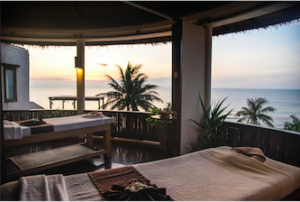
Basic steps for safety:
1. Staff:
The Spas who offer prenatal treatment must have staff trained and experienced in caring for pregnant women.
2. Initial consultation:
It is important to have an initial assessment (with full medical history) with a Spa practitioner to discuss and explain different safe and suitable treatment options and frequency of visits.
There is no spa treatment package that suits everyone. Therefore, an individualised plan tailored to her needs would be beneficial.
3. Time to start treatment:
It is usually a standard practice to start the Spa treatments (especially massage) after 12 weeks of pregnancy (first trimester). However, manicure and pedicure are usually allowed in the first trimester provided all safety precautions are taken (see below).
There is no reported case in the medical literature with adverse outcomes in early pregnancy but the effects of treatments to the fetus at this stage are unknown.
It is also usually advisable to commence treatments once the common symptoms of significant nausea and vomiting are over.
4. Spa treatment after 32 weeks of pregnancy:
Some Spa centres do not offer treatments to women after 32 weeks of pregnancy.
Although there is no known medical evidence to support this practice, local Spa policy should be followed.
5. Position during treatment:
During pregnancy, massage/ treatment must be avoided in the lying flat position, especially after 16 weeks.
This could lead to pressure on the Inferior Vena Cava (large veins on the back carrying blood from the lower extremities to the heart).
This could, in turn, result in a drop in the blood pressure, fainting episodes, and reduction in blood flow to the fetus.
Therefore, the treatment should be provided in sitting, semi-reclining or lying on the side position (with the help of extra pillows or a wedge).
This would relieve pressure on the vena cava.

Some good practice
1. Clothing:
Many Spas offer larger dressing gowns to expectant women, especially in advanced pregnancy.
2. Comfort:
Broader massage beds and wider dining chairs could be more comfortable.
Some Spas might have specially designed beds or custom-made bean bags or large ‘Body Pillows’ for use during pregnancy.
Some support cushions/ wedges under the knees (to elevate the legs) could be helpful in reducing the risk of leg swelling.
If she has problems with increased urinary frequency, then allocating a treatment room close to the toilet will be preferable.
Precaution:
Heated massage beds, weightless waterbeds, and warming caldarium loungers should be avoided.
3. Slippers:
Pregnant women have more tendency to slip and fall due to a change in balance. Therefore, appropriate foot-wear is vital.
Moreover, utmost care should be taken while getting down from the massage table.
The floor should always be kept dry to avoid accidents.
4. The timing of appointments:
To reduce the chance of heartburn, it might be advisable not to book the treatment immediately after lunch or afternoon tea.
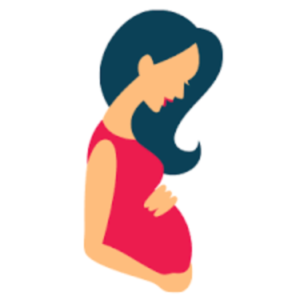
Specific spa treatments during pregnancy:
Is the body massage safe in pregnancy?
Is it safe to get a massage during pregnancy?
Massage is thought to reduce stress and anxiety and helps to get a restful sleep, easing back and neck pain and gives a sense of wellbeing.
The common form of massage during pregnancy is similar to Swedish massage.
Shiatsu is another form which is a relaxing lighter-touch massage.
Precautions during massage treatments:
1. Deep tissue massage should be avoided in the abdomen, lower back and back of the ankles.
2. To ensure wipe off all the oils from the feet before step down from the massage table or walk around the spa. This would minimise the risk of slip/ fall.
3. To ensure and confirm that the aromatherapy oils used during the massage are safe to be used during pregnancy.

Aromatherapy Oils (during massage)
Strong stimulating aromatherapy oils such as Basil, cedarwood, cinnamon bark, citronella, clary sage, jasmine, juniper, lemongrass, myrrh, peppermint, rockrose, sage, thyme, vetiver, and rosemary, should be avoided during pregnancy.
They are thought to have the potential to interfere with the development of the fetus and induce uterine contractions leading to premature labour.
Peppermint oil is thought to reduce breast milk production. Therefore, it should be avoided in the third trimester.
The following essential (diluted in a carrier oil or base) aromatherapy oils are considered safe:
Lavender, grapefruit, bergamot, lemon, frankincense, neroli, yang yang, and sandalwood.
Some women prefer to use fragrance-free organic oil, such as coconut oil, during pregnancy.
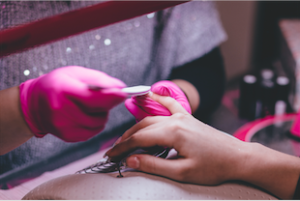
Are Manicure and Pedicure safe during pregnancy? Is foot spa safe for pregnant women?
Is it OK to get a pedicure while pregnant?
They are usually considered safe during pregnancy provided it is done by a certified practitioner with knowledge and experience to care for expectant women.
The following safety precautions must be taken:
1. Nail varnishes:
Varnishes containing toluene, phthalates, and formaldehyde, should be avoided during pregnancy.
Although these chemicals are thought to be harmful to the fetus, the amount present in nail varnish is very unlikely to be harmful.
However, it is a good practice to use varnishes free from these chemicals for pregnant women.
If the pregnant woman is still concerned regarding the use of nail varnishes, then manicure/ pedicure should be done without this, i.e., the nails can be just trimmed, cleaned and reshaped.
2. Hygiene: (Ref)
– The practitioner should wear a pair of new gloves.
– The cuticles should not be cut or pushed back, as they protect the nails from infection.
– All the tools (such as clippers) used during the process should be cleaned and sterilised in an autoclaved steriliser.
– Non-metal items, such as files, buffers, and sticks should be discarded.
– Pedicure baths should be thoroughly cleaned and sanitised.
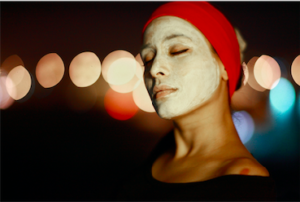
Is the facial safe during pregnancy?
The facial is considered safe during pregnancy.
During pregnancy, the skin can become dry, very sensitive to sunlight and develop pigmentation patches.
Usually, gentle sebum-balancing and skin-nourishing facials are preferred.
Oxygenating masks or herbal clay masks can be used.
Also, deep cleanse and balancing or hydrating masks are considered safe.
Steaming the face only should be safe. But any other form of treatment that can raise core body temperature such as steam rooms etc must be avoided (see below).
Precautions during facial treatment:
– Anti-aging retinoid (commonly used to help combat wrinkles and pigmentation issues) should be avoided as this is thought to be harmful to the fetus.
– Laser treatment and chemical peels should be avoided during pregnancy.
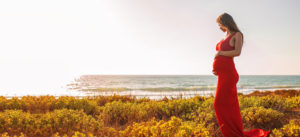
What are the other safe spa treatments during pregnancy?
The following are generally considered safe (but advice should be sought from a trained and experienced practitioner first as individual circumstances may vary):
1. Head massage
2. Foot soaks (such as Kneipp foot baths and ice fountains)
3. Hydrotherapy pool sessions (the temperature at or below 350C)
4. Swimming
5. Body Firming treatments
6. Spa lunch (avoiding specific ingredients such as soft cheese)
7. Placing lower legs in ‘Tropical Shower’ (important to hold the rails firmly to keep steady)
8. Reflexology is generally safe if done by the Reflexologist trained and experienced to work with pregnant women.
The reproductive and pituitary gland pressure points of the feet and ankles in reflexology should be avoided as they are thought to cause uterine contractions.
What spa treatment must be avoided during pregnancy?
Heated treatments:
Body’s temperature regulation mechanism changes during pregnancy. Pregnant women cannot dissipate heat effectively through sweating.
As a result, the body’s core temperature can rise significantly in a heated environment and also cause dehydration and fainting episodes.
Hyperthermia (abnormally elevated body temperature/ overheating) can be harmful to the growing fetus too, as this is thought to cause birth defects in early pregnancy.
Therefore, the use of heated treatments in pregnancy.
As a result, the following are strictly not advisable (contraindicated) during pregnancy:
1) Sauna, Hot Tub, and Jacuzzi
However, relaxing in hydrotherapy pools can be perfectly safe if designed specifically to be used for pregnant women. The air/water temperature should be at or below 350C.
Can you go in a hot tub in early pregnancy?
What happens if you go in a hot tub while pregnant?
Hot tubs can have a temperature of 104 F (40 C), therefore, should be avoided during pregnancy.
2) Hot stones should be avoided.
3) Steam rooms
4) Tanning beds
5) Rasuls (mud chambers)
6) Whirlpools
7) Underwater or over water massage jets in swimming pools.
Is it safe for me to sit and use vibrating massage chair in pregnancy?
It is strongly advisable that the manufacturer’s instruction should be followed as the chairs might vary in make and mechanisms.

